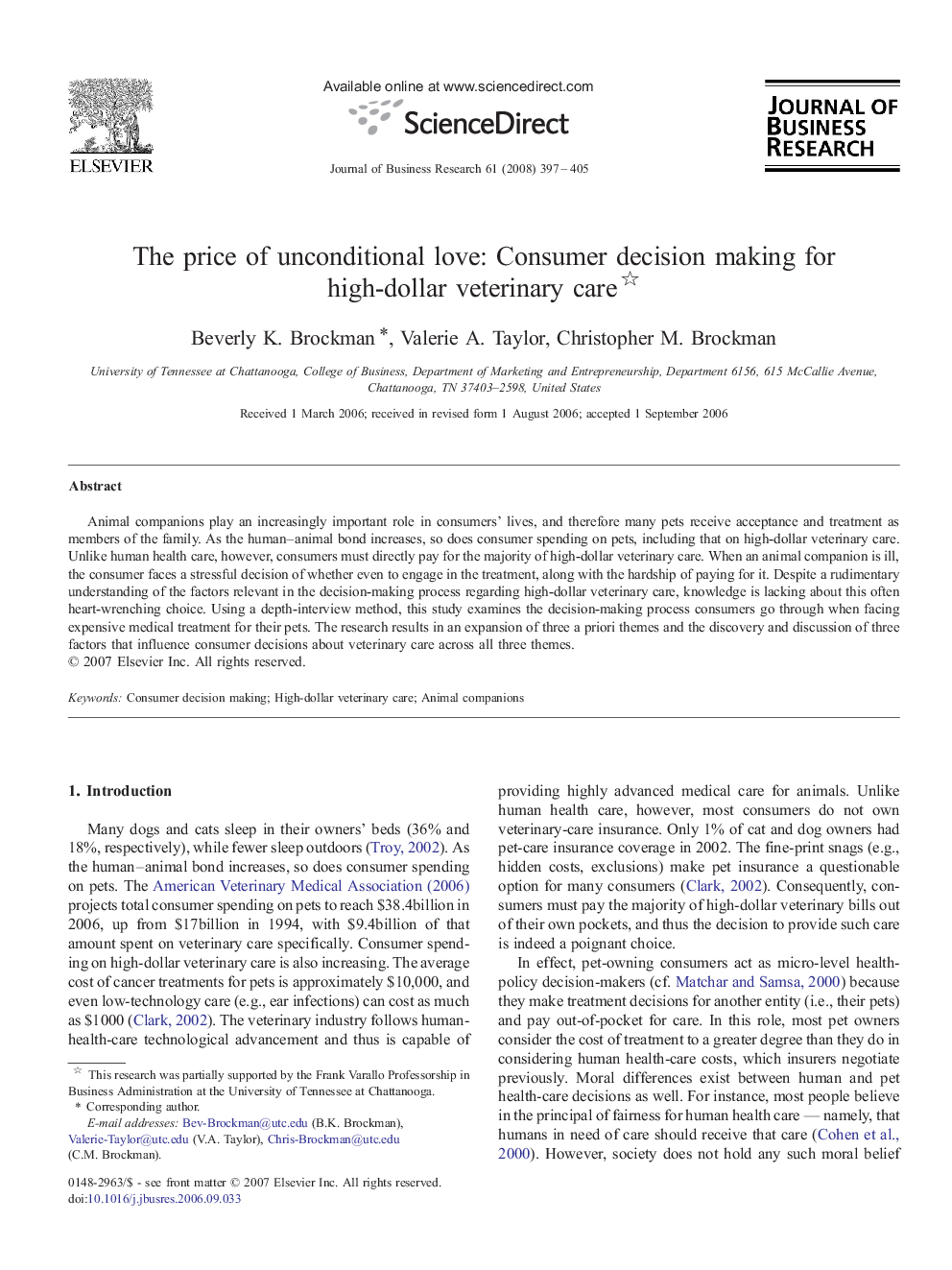| Article ID | Journal | Published Year | Pages | File Type |
|---|---|---|---|---|
| 10493114 | Journal of Business Research | 2008 | 9 Pages |
Abstract
Animal companions play an increasingly important role in consumers' lives, and therefore many pets receive acceptance and treatment as members of the family. As the human-animal bond increases, so does consumer spending on pets, including that on high-dollar veterinary care. Unlike human health care, however, consumers must directly pay for the majority of high-dollar veterinary care. When an animal companion is ill, the consumer faces a stressful decision of whether even to engage in the treatment, along with the hardship of paying for it. Despite a rudimentary understanding of the factors relevant in the decision-making process regarding high-dollar veterinary care, knowledge is lacking about this often heart-wrenching choice. Using a depth-interview method, this study examines the decision-making process consumers go through when facing expensive medical treatment for their pets. The research results in an expansion of three a priori themes and the discovery and discussion of three factors that influence consumer decisions about veterinary care across all three themes.
Related Topics
Social Sciences and Humanities
Business, Management and Accounting
Business and International Management
Authors
Beverly K. Brockman, Valerie A. Taylor, Christopher M. Brockman,
